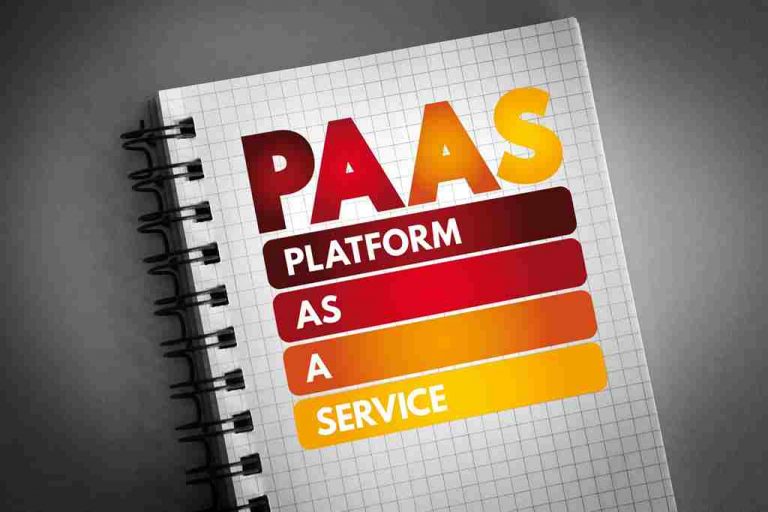Content
Multi-cloud deployment model provides high accessibility of your services. You can utilize specific services from two different public clouds at the same time in multi-cloud model. Private clouds offer businesses many of the benefits of a public cloud, but with additional control and customisation. The difference is that there is a separate hardware environment in the data centre, which makes it more suitable for sensitive data. It can be physically located on the company’s own on-site data centre or hosted by a third-party service provider. This cloud hybrid is a cloud computing environment that combines an on-premises data center with a public cloud, allowing data and applications to be shared between them.

The most common and well-known deployment model is Public Cloud. A Public Cloud is a huge data centre that offers the same services to all its users. The services are accessible for everyone and much used for the consumer segment. Of course, each model comes with its own plus and minus points.
Cloud Service Providers
The community cloud operates in a way that is similar to the public cloud. There’s just one difference – it allows access to only a specific set of users who share common objectives and use cases. This type of deployment model of cloud computing is managed and hosted internally or by a third-party vendor. IaaS means a cloud service provider manages the infrastructure for you—the actual servers, network, virtualization, and data storage—through an internet connection. The user has access through an API or dashboard, and essentially rents the infrastructure. This is the typical deployment model of cloud storage providers.
- You might also be interested in reading our blog article about cloud deployment models.
- In IaaS cloud service model, the cloud provider maintains the hardware along with servers, storage and networks while you manage the rest of the framework.
- It can be physically located on the company’s own on-site data centre or hosted by a third-party service provider.
- Private clouds offer businesses many of the benefits of a public cloud, but with additional control and customisation.
- We’re talking about employing multiple cloud providers at the same time under this paradigm, as the name implies.
Thus, deployment models for cloud computing are categorized based on their location. To know which model would best fit the requirements of your organization, let us first learn about the various types. It would help if you also made a risk assessment on the visibility and control. Customers have restricted visibility and control over the cloud resource because the one responsible for administering the infrastructure is the cloud provider. The lack of transparency introduces additional security concerns.
The largest enterprise buyers often have some infrastructure that they’d like to continue to utilize. To reach these customers , SaaS providers will need a fully portable version of their application that can be deployed and managed anywhere. You usually pay for what you use in a public cloud, though some public clouds don’t charge tenants. A multicloud environment might exist on purpose or by accident . Either way, having multiple clouds is becoming more common across enterprises that seek to improve security and performance through an expanded portfolio of environments.
Comparison Of Cloud Deployment Models
High Maintenance – Since it is managed in-house, the maintenance costs also increase. No Infrastructure Management – This does not require an in-house team to utilize the public cloud. Netflix, which thanks to its cloud migration managed to jump to global success. Your Red Hat account gives you access to your member profile, preferences, and other services depending on your customer status.
Security – Segmentation of resources within the same Infrastructure can help with better access and higher levels of security. Hybrid clouds give you the option of using operating expenses to scale out or capital expenses to scale up. Hybrid clouds are the catch-all, https://globalcloudteam.com/ because any workload can be hosted anywhere. A single tenant, physical server allowing you full access to its resources. SAAS, or Software As A Service, is a service that does not require any previous installation and is provided through the internet.
The cloud deployment model tells you how to distribute and manage hardware. Cloud service model is used to recognize and differentiate which layer of service you will manage, and which layer do the cloud service provider manages. In private cloud model, you maintain the data center just like it is done in public cloud model. An abstraction layer is created on top of your physical servers to gain flexibility. New servers can be added to the data center and there is no need to configure them again as they have semi-automatically become a part of the cluster. It is possible to get a private cloud from a public cloud provider.
A way to preserve the benefits of economy of scales with the Private Cloud is a Community Cloud. This is a cooperation between users who share some concerns like security, application types, legislative issues, and efficiency demands. In other words, a Community Cloud is a closed Private Cloud for a group of users.

We’re talking about employing multiple cloud providers at the same time under this paradigm, as the name implies. It’s similar to the hybrid cloud deployment approach, which combines public and private cloud resources. Instead of merging private and public clouds, multi-cloud uses many public clouds. Although public cloud providers provide numerous tools to improve the reliability of their services, mishaps still occur.
2 Netflix, Which Thanks To Its Cloud Migration Managed To Jump To Global Success
Managed private clouds are a cloud delivery option that helps enterprises with understaffed or underskilled IT teams provide better private cloud services and infrastructure. The differences between public clouds, private clouds, hybrid clouds, and multiclouds were once easily defined by location and ownership. So while we compare the differences below, there are plenty of caveats. Each different cloud service has its perks that can add to the value of your company. A public cloud is an ideal solution for a Cloud Server for small businesses and medium businesses.

The user can only pay for what they use using utility computing.It is a plug-in that is administered by an organization that determines what kind of cloud services must be deployed. Multiclouds are a cloud approach made up of more than 1 cloud service, from more than 1 cloud vendor—public or private. All hybrid clouds are multiclouds, but not all multiclouds are hybrid clouds.
There are lots of discussions on how strict the definition of Private Clouds should be. In general, a customer’s internally hosted data centre Cloud Deployment Models is regarded as a Private Cloud. If we add virtualization and automation, such a setup may very well be regarded as a Private Cloud.
Disadvantages Of Community Cloud
This deployment is a compromise between a private and a public model in terms of price and features. Platform as a Service allows outsourcing of hardware infrastructure and software environment, including databases, integration layers, runtimes, and more. The Infrastructure as a Service means the hiring & utilizing of the Physical Infrastructure of IT from a third-party provider. The IT resources are hosted on external servers, and users can access them via an internet connection. The private cloud gives the greater flexibility of control over cloud resources. Deploying more private cloud resources requires buying or renting more hardware—all capital expenses.
Workloads with predictable use patterns might be better off in a private cloud. Workloads with high volume or fluctuating demands might be better suited for a public cloud. For your security, if you’re on a public computer and have finished using your Red Hat services, please be sure to log out. Visit our cloud technology page to learn everything you need to know about cloud computing. One of the key elements of Cloud Computing is the deployment model.

As the name suggests, a hybrid cloud is a combination of two or more cloud architectures. While each model in the hybrid cloud functions differently, it is all part of the same architecture. Further, as part of this deployment of the cloud computing model, the internal or external providers can offer resources.
Disadvantages Of Public Cloud
Developers often use public cloud infrastructure for development and testing purposes. Its virtual environment is cheap and can be configured easily and deployed quickly, making it perfect for test environments. An excellent example of a community cloud is where several government departments perform transactions with one another, and they have their processing systems on shared infrastructure.
Types Of Cloud
Because the private cloud is managed in-house, it also means that private clouds are more high maintenance. You will be able to scale in a specific direction with private clouds according to the choice of the hardware. The public cloud deployment model, as the name suggests, is accessible by the public. A public cloud deployment model is great for companies that have low-security concerns. A cloud vendor may also offer a private cloud to their customers.
Managed services are a way to offload general tasks to an expert, in order to reduce costs, improve service quality, or free internal teams to do work that’s specific to your business. Public cloud users seem to have unlimited access to resources, but accessing those resources is usually an operational expense. Examples of public services are Facebook, Google, and LinkedIn.
It functions as a virtual computing environment with a deployment architecture that varies depending on the amount of data you want to store and who has access to the infrastructure. Most SaaS applications today are built to be deployed as a multi-tenant application that is managed and operated by the application vendor. This deployment model was pioneered by Salesforce as “on-demand” and has led to the modern software landscape we’re familiar with today. The low barrier to adoption of this model has supported freemium and trial opportunities through which most customers initially experience the product. As a result this the method that creates “bottom up” adoption of applications .
Cloud Basics: Deployment Models
An enterprise-ready Kubernetes container platform with full-stack automated operations to manage hybrid cloud, multicloud, and edge deployments. You can have a dedicated cloud on a public cloud (e.g. Red Hat OpenShift® Dedicated) or on a private cloud. For example, an accounting department could have its own dedicated cloud within the organization’s private cloud. Another advantage is that public clouds can be delivered as an almost infinitely scalable platform, and can be deployed faster than on-premise infrastructures.
